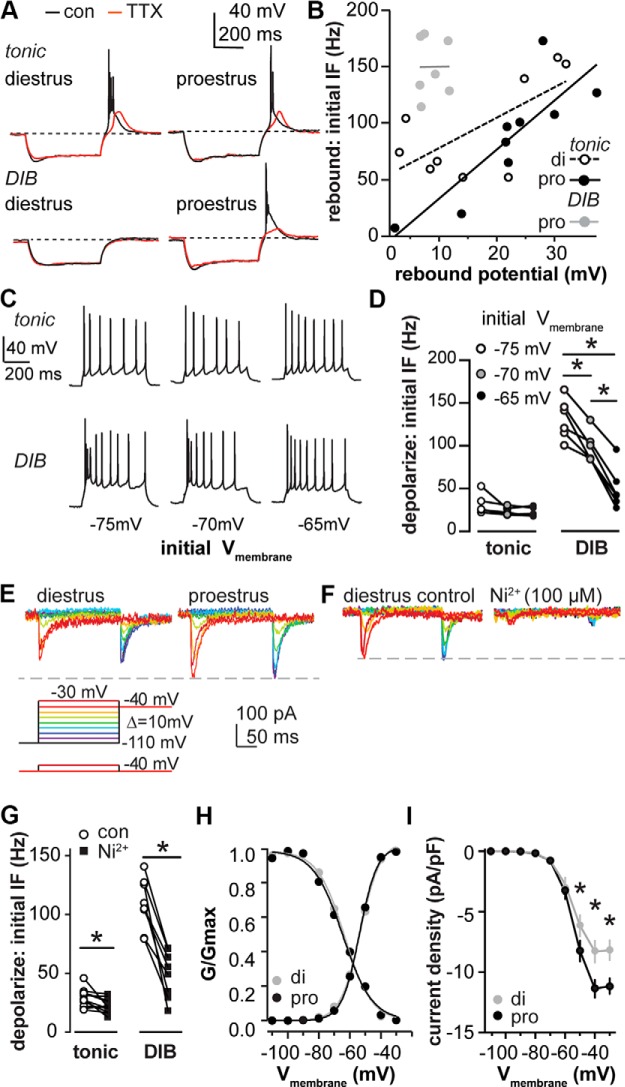Figure 4.
Ni2+-sensitive current is critical for bursting patterns and is under estrous cycle regulation. A, Representative examples for rebound potential of tonic and DIB cells on diestrus and proestrus under control conditions (black) and then tested with TTX (1 µm) application (red). Dashed lines indicate −70 mV. B, Positive correlation between rebound depolarization and initial IF was observed in tonic cells on di (open circle fitted with dashed line) and pro (black circle fitted with solid black line) but not in DIB cells on proestrus (gray circle fitted with gray line). C, Representative examples of the depolarization-induced firing pattern of tonic and DIB cells initiated at −65, −70, and −75 mV. D, IF was dependent on the preceding membrane potential in tonic and DIB cells, each line connects values from the same cells at different membrane potentials. E, Voltage protocols for IT isolation; bottom protocol was subtracted from the top to remove HVA contamination from step −30 mV (bottom, left). Representative isolated IT on diestrus (top, left) and proestrus (top,right), each color represents a tested voltage. F, Isolated IT was blocked by Ni2+ (100 µm). G, Initial IF of depolarization-induced firing for tonic and DIB cells under control conditions and with Ni2+ (100 µm) application, paired. H, Activation and inactivation of IT conductance was plotted and fit with Boltzmann function to derive V1/2 and k value on diestrus (gray dots fitted with gray line) and proestrus (black dots fitted with black line). I, Mean ± SEM current density of IT on diestrus and proestrus. *p < 0.05 calculated by two-way RM ANOVA and Holm−Sidak test.

